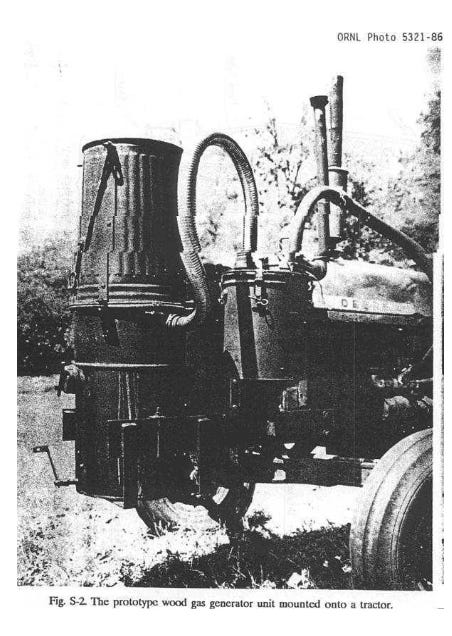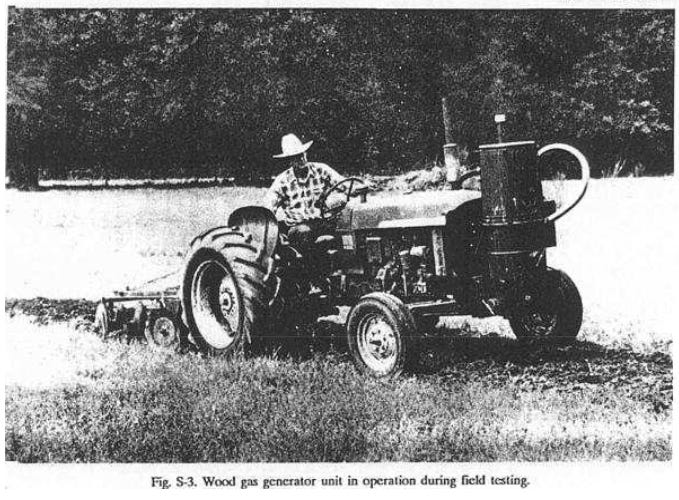In a previous article, I discussed an energy preparedness framework to establish home resilience levels based on critical industry principles.
Household resilience levels are as follows.
On-grid.
High power conventional loads.Off-grid.
Self-sufficient power loads with conventional alternatives.Low power.
Short-term power for essential heating, cooking, water and sanitation.Emergency.
Critical power for heath, safety and property damage loads.
While the article did provide some affordable suggestions, it avoided implementation specifics. The framework is a high level architecture and not a detailed design. Detailed designs depend on site specific limitations that are not described at the high level, because everyone has different circumstances.
Despite this, I would like to describe a little known technology that satisfies this framework and minimizes many risks associated with common energy alternatives.
What risks am I referring to?
e.g., In times of crisis or war: could you build, repair or locally source a solar panel?
The answer is no. Solar panels are intricate pieces of equipment produced through advanced engineering and manufacturing processes. Assuming you had both at your disposal, the materials required are also challenging to procure. Yes solar technology has its purpose in sustainable living practices, but this is a product of an advanced economy and advanced supply chains.
Given that fossil fuel generators and motors are in such wide use, is there an alternative to conventional fuel if gasoline, natural gas and diesel were unavailable (or unaffordable) in a time of crisis or war?
Actually — yes.
We are surrounded by an abundance natural resources invisible to the naked eye.
All the energy we use fundamentally comes from the sun. The umbrella term “fossil fuels” usually refers to the thermal energy released from breaking organic bonds, and often includes the following fuel sources:
Carbon.
e.g., Coal.Alkanes.
e.g., Methane (natural gas), butane, propane, octane, heavy composition (diesel), etc.Alcohol.
e.g., Ethanol, butanol, etc.Carbohydrates.
e.g., Wood is made of complex carbohydrate chains.
The alternative energy source I am referring to is wood. Everyone should have access to wood, perennial fibre or some combustible complex carbohydrate.
After all, plant life is abundant and prolific.
However, wood on its own is unable to run a gas generator or motor. Motors and generators are machines that provide mechanical work through a power train. Generators convert mechanical work into electrical energy through fixed magnets.
In order to interface with motors and generators, wood must be gasified.
The technology that performs this function is called a wood gasifier.
Wood gasifiers are not widely used.
As a result, there are few (if any) commercially available products. The greatest strength of a wood gasifier is that it can be made with common tools and materials, but its greatest strength is also its greatest weakness. It does require fabrication and testing on your part, which is fine for the Do-It-Yourselfers.
A wood gasifier must be built and tested by YOU for emergency or off-grid use.
Gasified wood is created by combusting wood without oxygen. Wood gas is generated through pyrolysis, which requires temperatures over 300°C.1 The resulting gas contains between 38.25 % - 43 % combustible fuel that is not suitable for compression and storage.2 However, this gas is suitable for immediate use as fuel for motors, generators and other gas powered devices. Solid waste in the form of charcoal and wood-ash can be reused in gardens or other sustainable endeavours.
A wood gasifier consists of two stages.
Gasification.
A hopper feeds a combustion chamber and gasifies fuel through a heat source.Filter.
The gas is transported through a filtering system to remove combustion impurities — such as tar — before it is exhausted through a delivery endpoint.
There are MULTIPLE varying designs ranging from simple to complex. Complex designs tend to include maintenance and operation factors. Wood gasifiers are a proven technology that have been used in times of crisis.


Wood gas vehicles were used during World War II as a consequence of fossil fuel rationing. These included trucks, buses, tractors, motorcycles, ships and trains.3
To evaluate the concept, consider the FEMA Gasifier Plans, which is an emergency-use design for heating purposes (the stratified gasification process is known for producing tar, which may damage an internal combustion engine if not thoroughly filtered).
Free Gasifier Plans provides a short list of plans.
There is a book available as well: Wood Gasifier Builder's Bible: Off Grid Fuel for the Prepared Homestead: Wood Gas in Minutes
There are plenty DIYers showcasing their gasification units.
JR M demonstrates a common wood gasifier design and how it can power a generator using wood pellets as a fuel source. This design is available through Instructables at Power in the Apocalypse (How to Build a Wood-Gasifier).
Some have created simple designs fabricated without welding. This is ideal for individuals with limited manufacturing equipment. Randomn demonstrates a simple design in his YouTube video below and shows it powering a generator.
Wood gas may not be suitable for On-Grid high power operations. There are plenty of egalitarian discussions regarding green energy, and this is not aimed at addressing those concerns. However, in the event of a long term emergency, this technology is invaluable, because it can be fuelled and constructed with widely available material.
Therefore wood gasifiers are worth considering for:
Off-grid.
Self-sufficient power loads with conventional alternatives.Low power.
Short-term power for essential heating, cooking, water and sanitation.Emergency.
Critical power for heath, safety and property damage loads.
We need to get creative and learn to recognize the utility of our natural resources.
Wood gas is one aspect of this philosophy along with biogas and anaerobic digestion. This technology cuts out the middle man and puts emergency management directly into your hands. In times of uncertainty, this is worth its weight in gold.
Consider researching and possibly implementing a design yourself.
Resilience and true sustainability starts with you.
Cooking with woodgas - energypedia. (n.d.). Energypedia.Info. Retrieved May 8, 2023, from https://energypedia.info/wiki/Cooking_with_Woodgas.
Watson-Price, E. (2011, February 17). Can wood gas be compressed & stored in a tank? It Still Runs. https://itstillruns.com/can-gas-compressed-stored-tank-7977114.html
Ekerholm, Helena. 'Cultural Meanings of Wood Gas as Automobile Fuel in Sweden, 1930-1945'. In Past and Present energy Societies: How Energy Connects Politics, Technologies and Cultures, edited by Nina Möllers and Karin Zachmann. Bielefeld: Transcript verlag, 2012.





